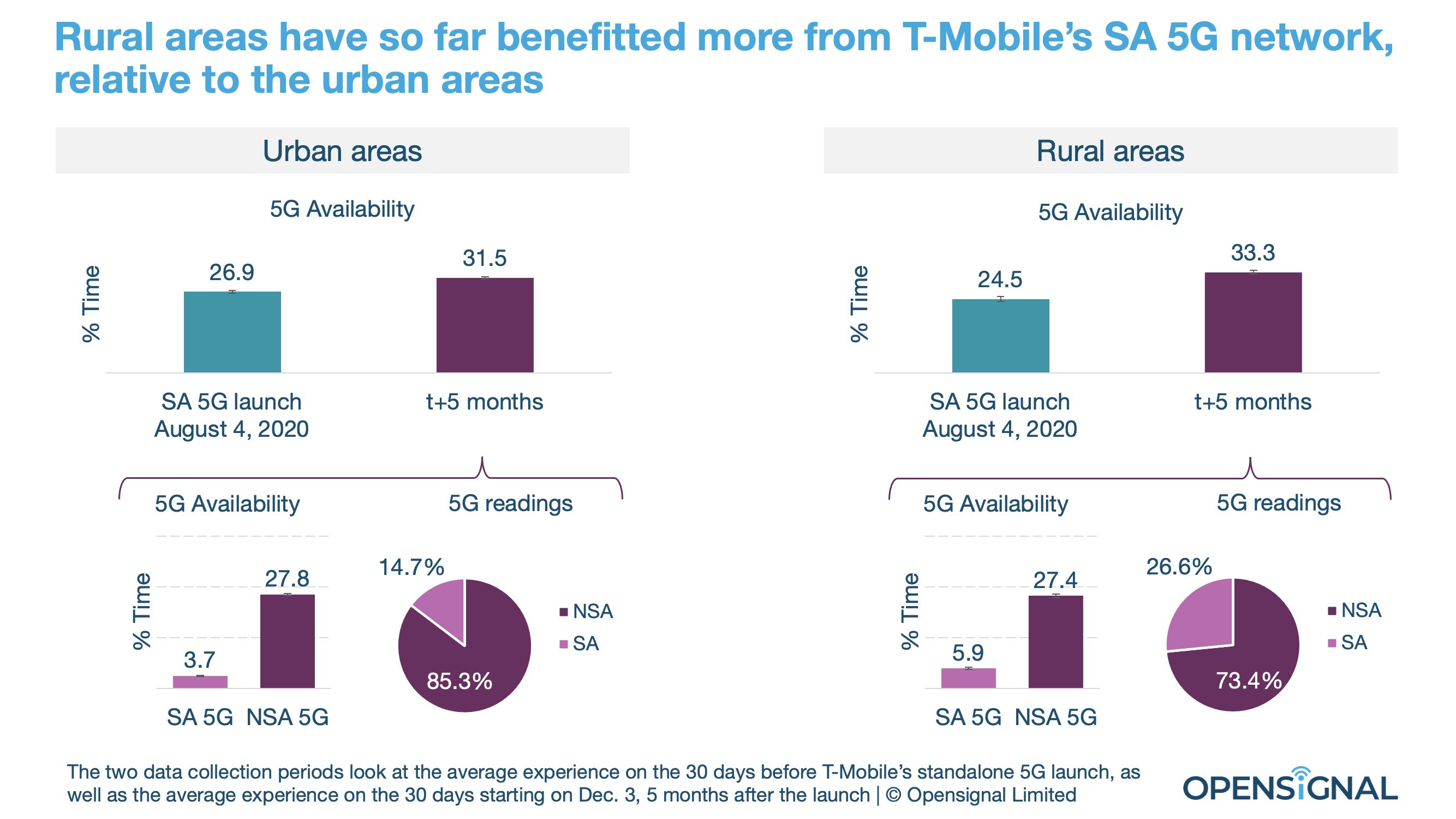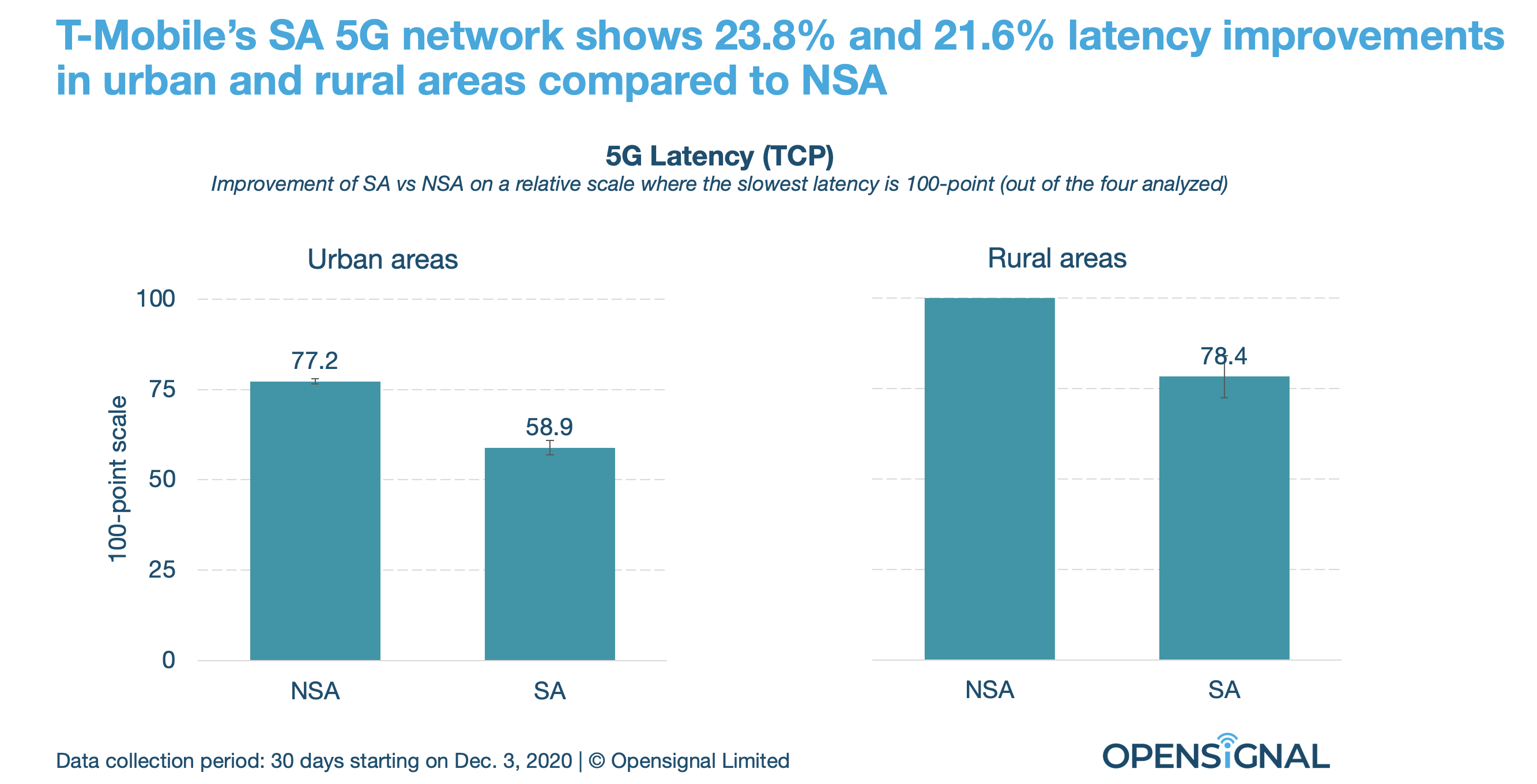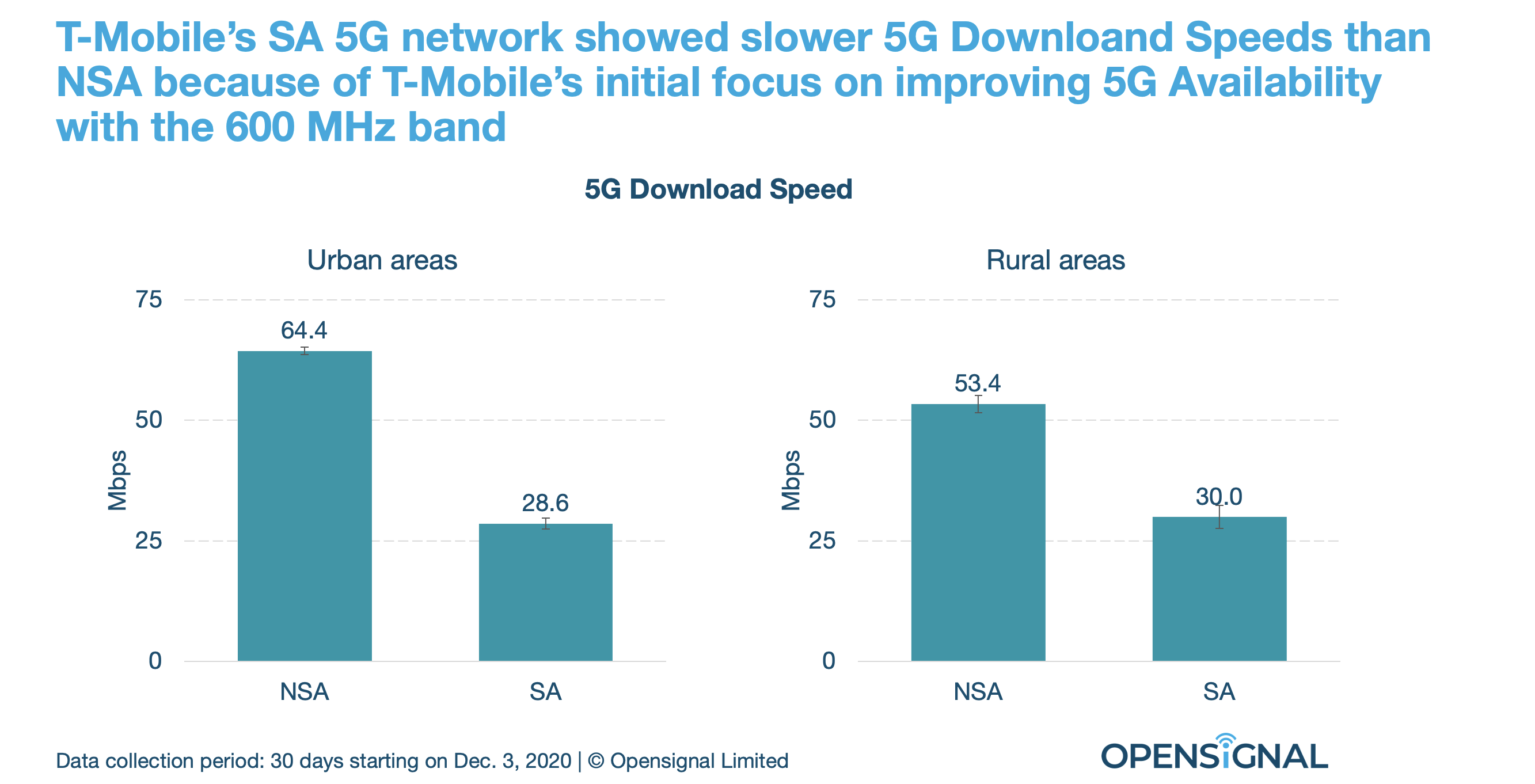T-Mobile users in rural areas were impacted the most from transition to SA 5G
In August of 2020, T-Mobile US claimed a world’s first with the launch of a nationwide standalone (SA) 5G network that uses its 600 MHz spectrum. Launched its 2019, T-Mo’s 600 MHz 5G network achieves “nationwide coverage”–200 million people covered–using the non-standalone architecture. According to the operator, the shift to standalone, saw a coverage expansion of 30% to 1.3 million square miles, upping population coverage to 250 million, and a 40% reduction in latency.
To better assess if and by how much T-Mo’s network improved once transitioned to SA, Opensignal analyzed user experience on the network before and after the shift. The firm found that after the launch of SA 5G services, user time connected to 5G “significantly increased,” with a particular jump seen in rural areas.
In fact, overall, rural users appeared to benefit the most from the transition to SA, particularly when it comes to 5G availability.
Prior to the SA 5G launch, OpenSignal said, 5G availability growth increased from 26% to only 26.9% across two months in urban areas, while rural areas saw no significant change. But, after T-Mobile launched its SA 5G network, there was a sharp increase in 5G availability across both urban and rural areas, with availability in urban areas increasing from 26.9% to 30% in the month following the network switch, while 5G availability in rural areas grew by 3.6 percentage points and reached 28.1%.

Further, when average 5G availability was calculated five months after the SA network switch, urban areas had experienced a further increase of 1.4 percentage points. But it was really the rural areas where the biggest impact was seen. According to Opensignal, 5G availability in rural areas reached 33.3%, 5.2 percentage points higher than the month following the SA 5G launch, and 8.9 percentage points above the 5G availability users experienced just before the launch.
5G latency also improved with SA, with T-Mobile US seeing a 23.8% improvement in latency compared to NSA in urban areas, with a similar 21.6% improvement in rural areas.

However, users— both in urban and rural locations—did not seem to experience faster download speeds on the SA network. The average download speed on the NSA network was 64.4 Mbps in urban areas and 53.4 Mbps in rural areas, while the data shows that the average 5G download speeds with SA across urban and rural areas were 28.6 Mbps and 30 Mbps, respectively.

Opensignal speculated that is due to T-Mobile’s prioritization of extending 5G availability on SA using 600 MHz. The firm added that this focus many change in 2021, though, as smartphone capable of connecting simultaneously to the carrier’s 600 MHz and 2.5 GHz 5G bands hit the market.
Opensignal considers the T-Mobile SA network to be a successful real-world example of the benefits of moving to SA 5G networks. The firm also anticipates that the operator will continue to expand its SA network and that over time, download speeds will improve just as latency and availability already have.

